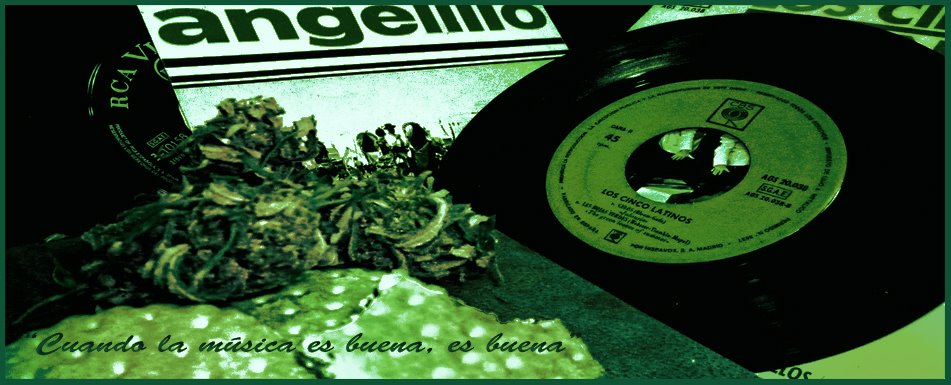By Eric
From wikipedia
Early career
Born and raised in Cleveland, Ohio, Hawkins studied classical piano as a child and learned guitar in his twenties. His original career goal was to become an opera singer in the footsteps of Paul Robeson. When his initial ambitions failed, he began his career as a conventional blues singer and pianist.
He served in the U.S. Army in the Pacific theater during World War II, primarily as an entertainer. Although he claimed to have been tortured for some time as a prisoner of war, stories of the circumstances of his actual capture vary. According to the documentary, I Put a Spell on Me, upon liberation he blew his chief tormentor's head off by taping a hand-grenade into his mouth and pulling the pin. Hawkins was an avid and formidable boxer. In 1949, he was the middleweight boxing champion of Alaska.
In 1951, he joined guitarist Tiny Grimes for a while, and recorded a few songs with him. When Hawkins became a solo performer, he often performed in a very stylish wardrobe, featuring leopard skins, red leather and wild hats.
"I Put a Spell on You"
His most successful recording, "I Put a Spell on You" (1956), was selected as one of The Rock and Roll Hall of Fame's 500 Songs that Shaped Rock and Roll. According to the AllMusic Guide to the Blues, "Hawkins originally envisioned the tune as a refined ballad." The entire band was intoxicated during a recording session where "Hawkins screamed, grunted, and gurgled his way through the tune with utter drunken abandon." The resulting performance was no ballad but instead a "raw, guttural track" that became his greatest commercial success and surpassed a million copies in sales.
The performance was mesmerizing, although Hawkins himself blacked out and was unable to remember the session. Afterward he had to relearn the song from the recorded version. Meanwhile the record label released a second version of the single, removing most of the grunts that had embellished the original performance; this was in response to complaints about the recording's overt sexuality. Nonetheless it was banned from radio in some areas.
Soon after the release of "I Put a Spell on You", radio disc jockey Alan Freed offered Hawkins $300 to emerge from a coffin onstage. Hawkins accepted and soon created an outlandish stage persona in which performances began with the coffin and included "gold and leopard skin costumes and notable voodoo stage props, such as his smoking skull on a stick – named Henry – and rubber snakes." These props were suggestive of voodoo, but also presented with comic overtones that invited comparison to "a black Vincent Price."
Later career
Hawkins had several further hits, including "Constipation Blues", "Orange Colored Sky", and "Feast of the Mau Mau". Nothing he released, however, had the monumental success of "I Put a Spell on You". In fact, "Constipation Blues" has been described as "gross". In Paris in 1999 and at the Taste of Chicago festival, he actually performed the song with a toilet onstage.
He continued to tour and record through the 1960s and 1970s, particularly in Europe, where he was very popular. He appeared in performance (as himself) in the Alan Freed bio-pic American Hot Wax in 1978. Subsequently, filmmaker Jim Jarmusch featured "I Put a Spell on You" on the soundtrack – and deep in the plot – of his film Stranger Than Paradise (1983) and then Hawkins himself as a hotel night clerk in his Mystery Train and in roles in Álex de la Iglesia's Perdita Durango and Bill Duke's adaptation of Chester Himes' A Rage In Harlem.
His 1957 single "Frenzy" (found on the early 1980s compilation of the same name) was included in the compilation CD, Songs in the Key of X: Music from and Inspired by the X-Files, in 1996. This song was featured in the show's Season 2 episode "Humbug". It was also covered by the band Batmobile.
In 1983, Hawkins relocated to the New York area. In 1984 and 1985, Hawkins collaborated with garage rockers The Fuzztones, resulting in "Screamin' Jay Hawkins and The Fuzztones Live" album recorded at Irving Plaza in December 1984. They perform in the 1986 movie Joey
In July 1991, Hawkins released his album Black Music for White People. The record features covers of two Tom Waits compositions: "Heart Attack and Vine" (which, later that year, was used in a European Levi's advertisement without Waits' permission, resulting in a lawsuit), and "Ice Cream Man" (which, contrary to popular belief, is a Waits original, and not a cover of the John Brim classic.) Hawkins also covered the Waits song, "Whistlin' Past the Graveyard", for his album Somethin' Funny Goin' On.
When Dread Zeppelin recorded their 'disco' album, It's Not Unusual, in 1992, producer Jah Paul Jo asked Screamin' Jay, to guest. Hawkins performed the songs "Jungle Boogie" and "Disco Inferno".
Hawkins also toured with The Clash and Nick Cave during this period, and not only became a fixture of blues festivals, but appeared at many film festivals as well.
Hawkins died on February 12, 2000 after surgery to treat an aneurysm. He left behind many children by many women; about 55 were known (or suspected) upon his death, and upon investigation, that number "soon became perhaps 75 offspring".
Influence
Although Hawkins was not a major success as a recording artist, his highly theatrical performances from "I Put a Spell On You" onward earned him a steady career as a live performer for decades afterward, and influenced subsequent acts. He opened for Fats Domino, Tiny Grimes and the Rolling Stones. This exposure in turn influenced rock groups such as Screaming Lord Sutch, Black Sabbath, Arthur Brown, Dread Zeppelin, The Horrors and Alice Cooper.
LOOK FOR: SJH
.jpg)

nuevo pass (refresco): katetoskopio/screamin'jayhawkins
ResponderEliminar